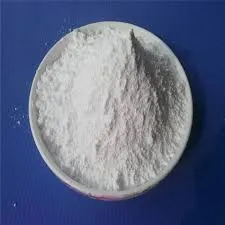Chemical Used for Purifying Water
Water is an essential resource for life, and ensuring its purity is critical for human health and environmental sustainability. Various chemicals are used to purify water, targeting different types of contaminants, including bacteria, viruses, heavy metals, and organic compounds. This article explores the primary chemicals used in water purification, their mechanisms of action, and their benefits and drawbacks.
One of the most commonly used chemicals in water purification is chlorine. Chlorine is an effective disinfectant that kills bacteria and viruses by disrupting their cellular processes. Its effectiveness is one of the reasons why it is widely used in municipal water treatment facilities. Chlorination not only ensures safe drinking water but also prevents the growth of pathogens in distribution systems. However, the use of chlorine can produce harmful by-products known as trihalomethanes (THMs), which are linked to adverse health effects, including cancer. This has prompted some municipalities to seek alternative disinfection methods.
Chemical Used for Purifying Water
Hydrogen peroxide is another chemical used for disinfecting water. It acts as a strong oxidizer and can effectively eliminate a variety of pathogens. It is often used in conjunction with other treatments to enhance effectiveness. Unlike chlorine, hydrogen peroxide decomposes into water and oxygen, leaving no harmful residues. Nonetheless, its high cost compared to chlorine and potential instability in diluted solutions can limit its use in some settings.
chemical used for purifying water

Coagulation and flocculation are also essential processes in water purification, often involving chemicals like aluminum sulfate (alum) or ferric chloride. These chemicals help to remove suspended solids and turbidity from water by causing smaller particles to clump together into larger aggregates, or flocs, which can then be removed through sedimentation or filtration. This process not only clarifies water but also aids in the removal of certain pathogens.
Activated carbon is another critical component used in water purification systems. It is effective in adsorbing organic compounds, chlorine, and other chemicals that affect taste and odor. Activated carbon systems can be used in both large-scale municipal facilities and individual home water filters. While they are good at removing many contaminants, they require regular replacement to maintain effectiveness, and they do not disinfect water, which means they are often used in combination with other disinfection methods.
Ion exchange resins are utilized primarily to remove dissolved ions, such as calcium and magnesium, which cause water hardness. By exchanging these ions with sodium ions, water becomes softer and more suitable for various uses. Additionally, ion exchange can remove heavy metals, making it useful in industrial applications and wastewater treatment.
In conclusion, various chemicals play vital roles in the purification of water, each with its specific strengths and limitations. The choice of chemical for water treatment often depends on the type of contaminants present, the scale of treatment, economic factors, and regulatory requirements. As water quality continues to be a global concern, ongoing research and technological advancements will be essential in developing safer and more efficient water purification methods. The ultimate goal is to ensure access to clean, safe drinking water for everyone, safeguarding public health and promoting environmental sustainability.

